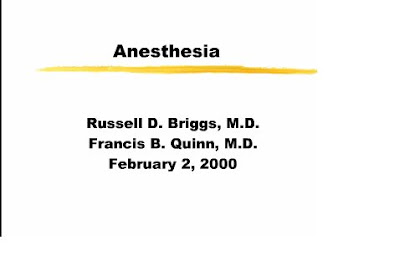Breast cancer is a cancer that starts in the cells of the breast in women and men. Worldwide, breast cancer is the second most common type of cancer after lung cancer (10.4% of all cancer incidence, both sexes counted) and the fifth most common cause of cancer death. In 2005, breast cancer caused 502,000 deaths worldwide (7% of cancer deaths; almost 1% of all deaths)
Labels: Breast Cancer, Cancer
A stroke is the rapidly developing loss of brain functions due to a disturbance in the blood vessels supplying blood to the brain. This can be due to ischemia (lack of blood supply) caused by thrombosis or embolism or due to a hemorrhage. As a result, the affected area of the brain is unable to function, leading to inability to move one or more limbs on one side of the body, inability to understand or formulate speech or inability to see one side of the visual field. In the past, stroke was referred to as cerebrovascular accident or CVA, but the term "stroke" is now preferred.
Aortic valve stenosis (AS) is a valvular heart disease caused by the incomplete opening of the aortic valve.
The aortic valve controls the direction of blood flow from the left ventricle to the aorta. When in good working order, the aortic valve does not impede the flow of blood between these two spaces. Under some circumstances, the aortic valve becomes narrower than normal, impeding the flow of blood.
Labels: Aortic Stenosis
An echocardiogram, often referred to in the medical community as a cardiac ECHO or simply an ECHO, is a sonogram of the heart. Also known as a cardiac ultrasound, it uses standard ultrasound techniques to image two-dimensional slices of the heart. The latest ultrasound systems now employ 3D real-time imaging.
In addition to creating two-dimensional pictures of the cardiovascular system, an echocardiogram can also produce accurate assessment of the velocity of blood and cardiac tissue at any arbitrary point using pulsed or continuous wave Doppler ultrasound. This allows assessment of cardiac valve areas and function, any abnormal communications between the left and right side of the heart, any leaking of blood through the valves (valvular regurgitation), and calculation of the cardiac output as well as the Ejection fraction.
A sleep disorder (somnipathy) is a medical disorder of the sleep patterns of a person or animal. Some sleep disorders are serious enough to interfere with normal physical, mental and emotional functioning. A test commonly ordered for some sleep disorders is the polysomnogram.
Labels: Sleep disorder
Autoimmune hepatitis has an incidence of 1-2 per 100,000 per year, and a prevalence of 10-20/100,000. As with most other autoimmune diseases, it affects women much more often than men (70%). Liver enzymes are elevated, as may be bilirubin. Autoimmune hepatitis can progress to cirrhosis.
Labels: Autoimmue hepatitis, Autoimmunity
Autoimmunity is the failure of an organism to recognize its own constituent parts as self, which results in an immune response against its own cells and tissues. Any disease that results from such an aberrant immune response is termed an autoimmune disease. Prominent examples include Coeliac disease, diabetes mellitus type 1 (IDDM), systemic lupus erythematosus (SLE), Sjögren's syndrome, Churg-Strauss Syndrome, Hashimoto's thyroiditis, Graves' disease, idiopathic thrombocytopenic purpura, and rheumatoid arthritis (RA).
Labels: Autoimmunity
The thyroid is one of the largest endocrine glands in the body. This gland is found in the neck inferior to (below) the thyroid cartilage (also known as the Adam's apple in men) and at approximately the same level as the cricoid cartilage. The thyroid controls how quickly the body burns energy, makes proteins, and how sensitive the body should be to other hormones.
Labels: thyroid, Thyroid disease
Migraine is a neurological syndrome characterized by altered bodily experiences, painful headaches, and nausea. It is a common condition which affects women more frequently than men.
The typical migraine headache is one-sided and pulsating, lasting 4 to 72 hours. Accompanying complaints are nausea and vomiting, and a heightened sensitivity to bright lights (photophobia) and noise (hyperacusis). Approximately one third of people who experience migraines get a preceding aura, in which a patient may sense a strange light or unpleasant smell.
The first anesthesia (a herbal remedy) was administered in prehistory. Opium poppy capsules were collected in 4200 BC, and opium poppies were farmed in Sumeria and succeeding empires. The use of opium-like preparations in anaesthesia is recorded in the Ebers Papyrus of 1500 BC. By 1100 BC poppies were scored for opium collection in Cyprus by methods similar to those used in the present day, and simple apparatus for smoking of opium were found in a Minoan temple. Opium was not introduced to India and China until 330 BC and 600–1200 AD respectively, but these nations pioneered the use of cannabis incense and aconitum.
Labels: anesthesia
Syncope is the medical term for fainting, a sudden, usually temporary, loss of consciousness generally caused by insufficient oxygen in the brain either through cerebral hypoxia or hypotension but possibly for other reasons. Typical symptoms progress through dizziness, clamminess of the skin, a dimming of vision or brownout, possibly tinnitus, complete loss of vision, weakness of limbs to physical collapse. These symptoms falling short of complete collapse, or a fall down, may be referred to as a syncoptic episode.
Diabetes mellitus often referred to simply as diabetes is a syndrome of disordered metabolism usually due to a combination of hereditary and environmental causes, resulting in abnormally high blood sugar levels (hyperglycemia). Blood glucose levels are controlled by a complex interaction of multiple chemicals and hormones in the body, including the hormone insulin made in the beta cells of the pancreas. Diabetes mellitus refers to the group of diseases that lead to high blood glucose levels due to defects in either insulin secretion or insulin action.
Subscribe to:
Posts (Atom)











